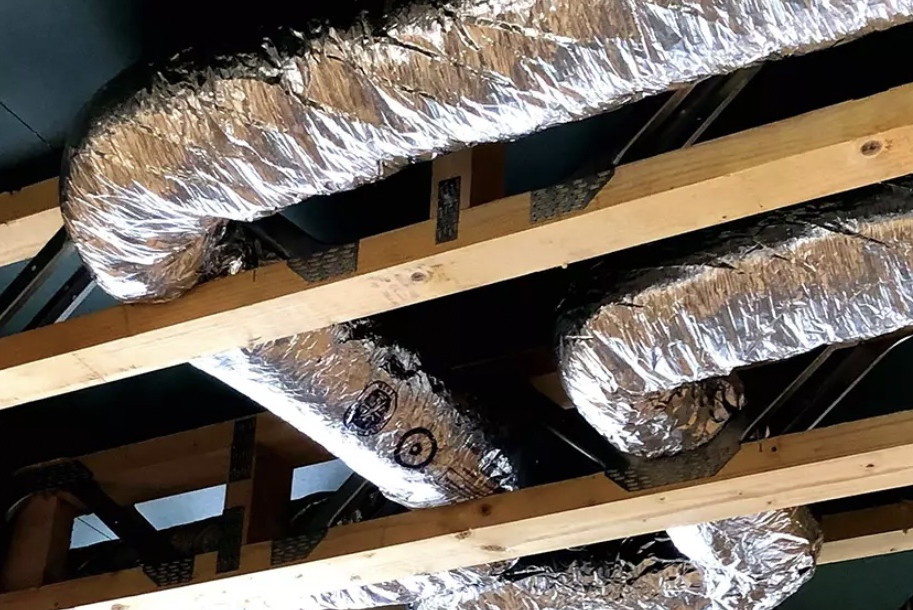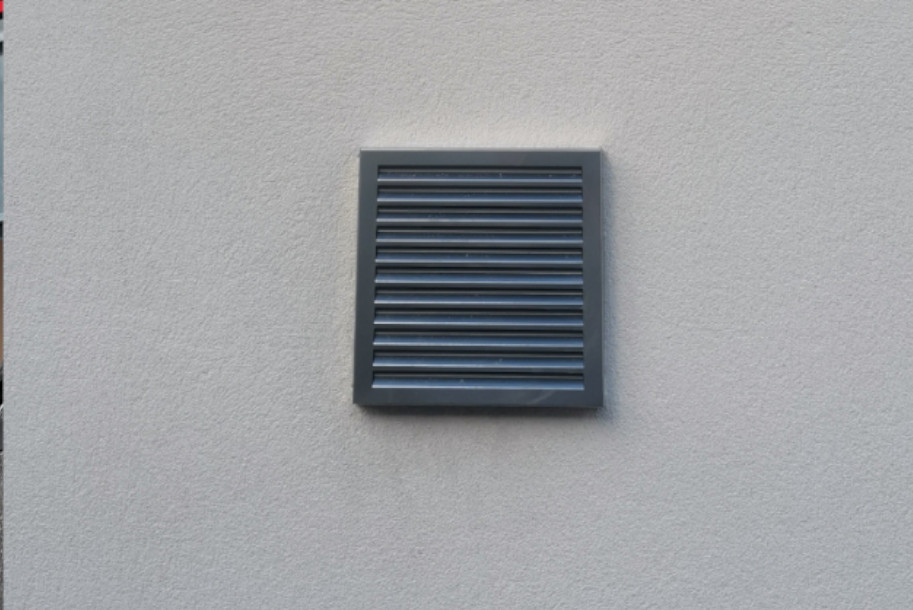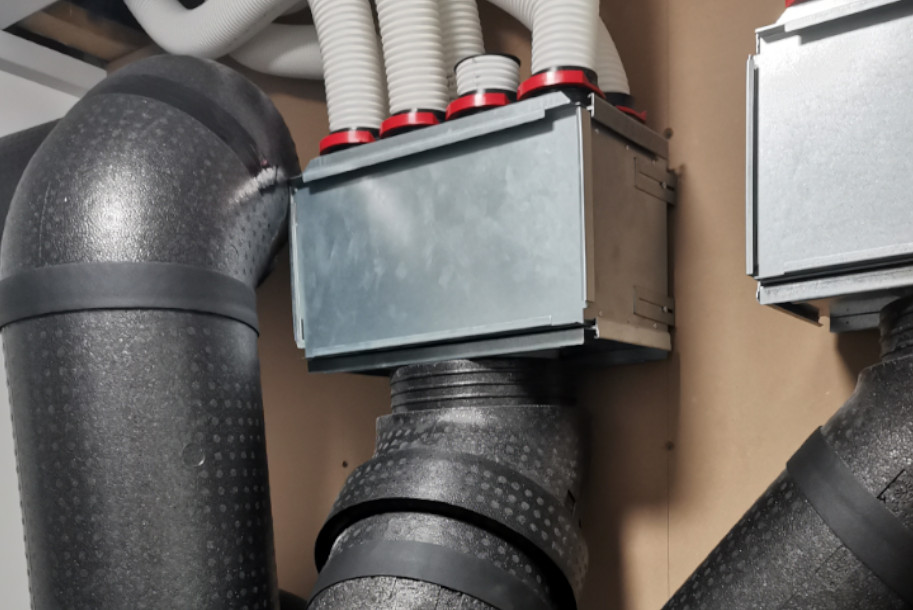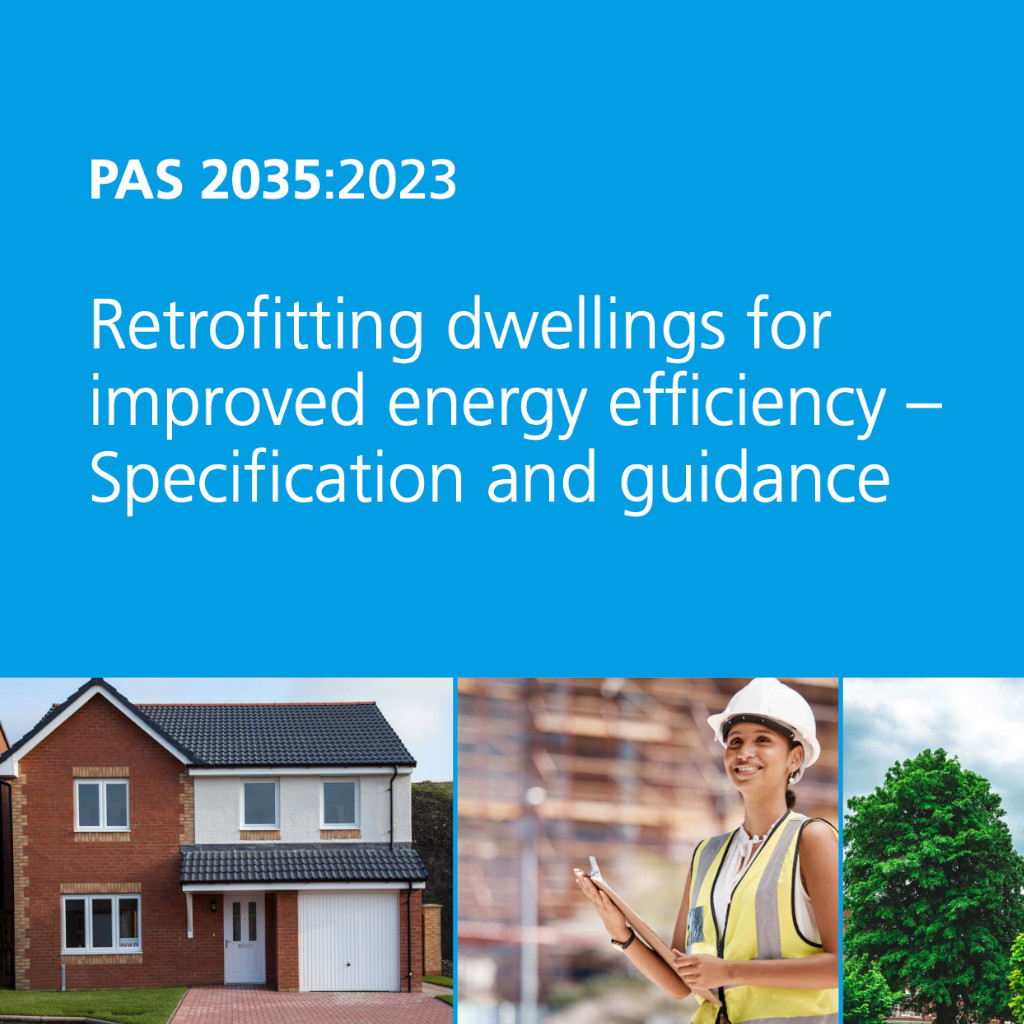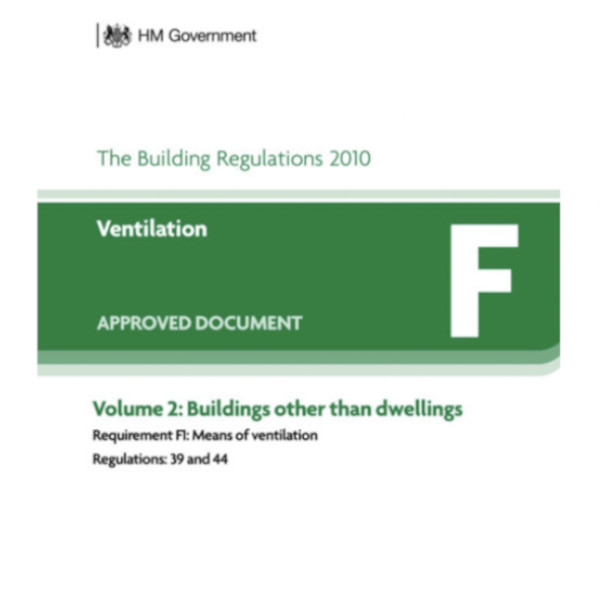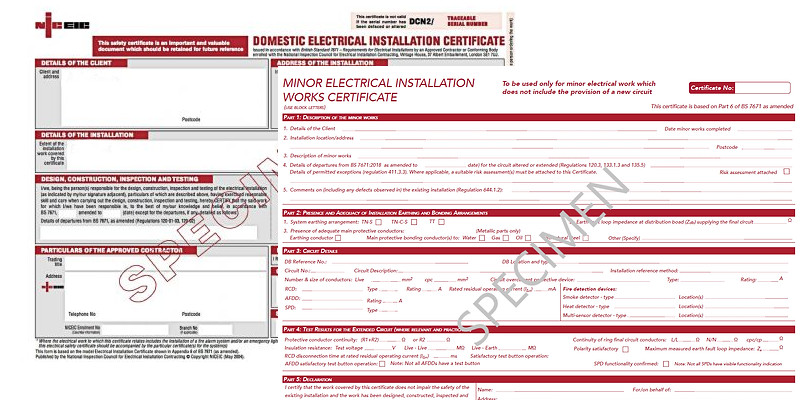cMEV
The Basics.
A centralized mechanical extract ventilation system (cMEV) is a system that circulates air throughout a building, bringing fresh air in and removing stale air. Centralized ventilation systems can be an important part of new, energy-efficient buildings, and can also be a good investment when renovating older buildings.
Building Regulation Part F – Covers centralized mechanical extract ventilation (cMEV)
What is cMEV system?
Centralised mechanical ventilation refers to a ventilation system in a building where the ventilation equipment is located in a central location and serves multiple areas or zones within the building. This is in contrast to decentralised ventilation systems, where individual units serve specific spaces independently. Video from Titon.

The Pros.
Consistent Air Quality. Centralised systems provide uniform ventilation across multiple areas or zones within a building, ensuring consistent indoor air quality (IAQ) throughout.
Control and Automation. Centralised systems often come with advanced control options, including automated sensors that adjust ventilation based on air quality, humidity, and occupancy.
Reduced Noise. Because the main ventilation equipment is typically located away from living or working areas, centralised systems can be quieter compared to individual units.
Aesthetic Benefits. With fewer individual units required, centralised systems can be less obtrusive and more aesthetically pleasing, as they minimize visible equipment and vents.
The Cons.
Initial Cost. The installation of a centralised system can be more expensive than decentralised systems, due to the complexity of ductwork and equipment.
Complex Installation. Installing a centralised system in an existing building can be challenging and may require significant modifications.
Maintenance Requirements. Centralised systems require regular maintenance to ensure they operate efficiently, including filter changes and system inspections.
Single Point of Failure. A failure in the central system can impact the ventilation of the entire building, whereas decentralised systems offer redundancy with multiple independent units.
Energy Use. While they can be energy-efficient, centralised systems still consume energy, especially if not properly maintained or if the heat recovery functions are not optimized.
Tips on controlling moisture and condensation.
Open Windows. Regularly open windows to let fresh air circulate and reduce humidity.
Use Extractor Fans. Turn on extractor fans in bathrooms and kitchens to remove moisture from showers and cooking.
Install Trickle vents. Easy and cheap solution to introduce background ventilation if required.
Check door to floor clearances. This should be around 10 mm from finished floor covering to allow fresh air to circulate from room to room. (fire doors have different regulations)
Avoid drying clothes indoors. Try to dry your clothes outside or in a well-ventilated area.
Use Dehumidifiers. Consider using a dehumidifier in damp areas to reduce moisture levels. If you cannot avoid drying clothes inside, then a dehumidifier can help with the moisture control.
Keep your home at an even temperature. At 18-21 °C, the dew point will very rarely be reached. As we know, affordability can have a huge impact on achieving this.
Use pan lids. Always try to use lids on cooking pans, not only will this reduce moisture, but it makes cooking more energy efficient. If extraction is available when cooking, then try to use it.
Fix leaks. Repair any leaks in your roof, walls, or pipes to prevent dampness.
Insulate Well. Proper insulation helps prevent condensation by keeping your home at a consistent temperature.
Vent Appliances. Ensure dryers and other appliances are vented outside to avoid trapping moisture indoors.
Avoid using portable gas appliances(LPG). Moisture from burning LPG can lead to condensation, which can cause mould and mildew.
Installation guides.
From June 2022 the building regulations (Part F) introduced a more robust commissioning regime with ventilation. All new mechanical ventilation systems should be commissioned, and a copy of the commissioning report should be left on the premises. A link to the BEAMA checklist is here. Building control should be notified unless the installers are members of a self certifying competent person scheme (i.e. NAPIT, NICEIC).
Ventilation rate. The minimum ventilation rate required by UK building regulations is within part F and currently set at 0.3 litres per second per square meter of floor area.
Duct insulation. Ducting carrying air between the unit and the atmosphere must be insulated to reduce the chance of condensation.
Outlet terminal. The outlet terminal should have a free area that’s at least the same as the duct’s cross-sectional area. It should also be designed to prevent rain, insects, and birds from entering the duct.
Flexible ducting. Flexible ducting should be pulled taut and kept to a minimum length.
Supply and extract terminals. *Air valves should be positioned on the opposite side of the room from internal door openings. They should also be at least 200 mm from walls if they’re on the ceiling, and no more than 400 mm from the ceiling if they’re on the wall.
Background ventilation. Trickle vents should not be installed in the same rooms as the room extraction point (valves in the industry), as overall ventilation effectiveness can be reduced. Door undercuts should be around 10mm from the finished floor. (fire doors have different regulations)
*Air valves are an important part to any mechanical ventilation system. They are used in rooms where the ducting meets ceilings or walls so that air can be properly extracted or supplied.
Gas and open flued appliances.
If the fabric of the property is being improved and open-flued gas appliances exist, then a gas spillage test should be carried out on each appliance.
Rules exist that give an average unimproved property a certain amount of leakiness (adventitious air) to allow open-flued appliances to operate safely.
This all depends on how much fuel burns over a period of time, for example: 7.5kw/hr, 9kw/hr, 6.9kw/hr. You will see this on the data badge of the appliance (gas rating of an appliance here.). The more fuel used, the more leakiness is needed. Multifuel appliances are treated in roughly the same way but do not come under gas safe legislations. HETAS and building regulations govern multifuel installations and ventilation.
This is the reason combustion ventilation is sometimes needed. This allows the air to be replenished (with an open flued appliance we are burning the oxygen in the room that we use to breathe)
With the introduction of insulation, extraction ventilation should be installed as part of the process, we now have a different factor to add in with gas safety. Extraction fans either pulling or pushing air (PIV) can now effect the performance of the appliance.
Open flued gas appliances should be checked to prove they are not spilling products of combustion into the property. This is verified by performing a spillage test.
Part J states. “Extract fans lower the pressure in a building, which can cause the spillage of combustion products from open-flued appliances. This can occur even if the appliance and the fan are in different rooms”.
Any funded insulation work now includes ventilation upgrades as part of the current PAS, so extract ventilation will be installed. This should have been factored in as part of any ventilation work carried out. A competent person is required to perform spillage tests.
Part B, 8(1) of the Gas Safety (Installation and Use) Regulations 1998 states that no person can make any changes to a premises that contains a gas fitting or storage vessel if the changes would compromise the safety of the fitting or vessel.
This basically means if the fabric of the building (walls, floors, roofs) are being insulated then appliances need to be checked by a suitably competent and qualified person.
PAS 2035 is a comprehensive standard and not a regulation. It was introduced in 2019 as part of the UK government’s commitment to improving energy efficiency in buildings. If work being carried out on a UK funded scheme then the current PAS should be followed aswel as building regulations.
Part F of the UK Building Regulations, sets out requirements for ventilation in buildings to ensure adequate indoor air quality and prevent issues such as condensation, mold growth, and the buildup of pollutants.
The primary objectives of Part F are to.
Provide Sufficient Ventilation, Control Condensation and remove pollutants.
Click here for more on regulations
Electrical certificates.
The two types of electrical certificates you will come across as a customer who is having any electrical work as part of installing EEM’s (energy efficient measures)
- Electrical Installation.
- Minor Works Certificate.
Electrical Installation Certificate.
An electrical installation certificate is the type of certificate a customer receives after an electrician has installed one or more new circuits. Other examples include a complete rewire, a replacement consumer unit or an additional consumer unit. Generally, any time electrical work is done at the consumer unit, a new installation certificate will be issued.
Minor Works Certificate.
A minor works certificate is issued after an electrician has made an alteration to an existing circuit. Minor works certificates are often used to certify work such as adding additional sockets to an existing circuit or increasing the number of light fittings in a room. It can also be where a fused spur has been installed for an appliance or boiler connection.

